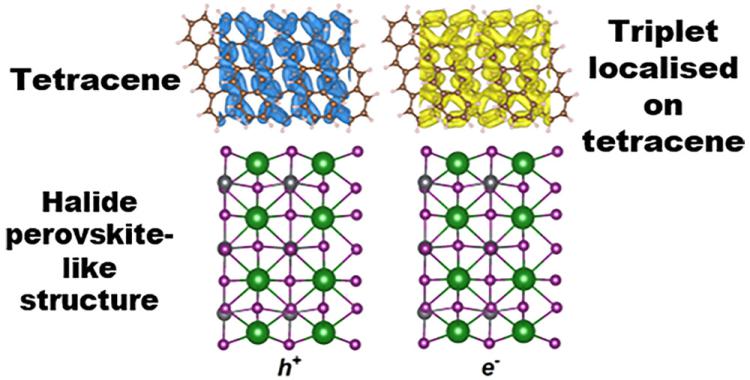Research Highlights
New routes to increase solar panel efficiency
To maximise solar panels’ ability to mitigate greenhouse gas emissions, and reduce reliance on fossil fuels, their efficiency should be as high as possible. However, current commercial solar panels’ efficiency is limited to 29%: not all sunlight is absorbed and significant energy is lost from excited electrons before they are extracted to an external circuit (termed thermalisation). A promising route to overcome this efficiency limit, which could increase efficiencies to above 40%, is combining a low-bandgap semiconductor with a singlet fission material. Following absorption of a photon, a singlet fission material converts one singlet into two triplets. This reduces the thermalisation loss, keeping more energy in the form of triplets. However, for this design to work, triplets (or they energy they carry) mut be extracted from the system.

We carried out 150 experiments on this combined system, screening for triplet transfer from singlet fission materials to halide perovskites, a low bandgap semiconductor. However, despite exploring a wide parameter space we were not able to make a functioning device. To understand the interface better, and why it is difficult to optimise, we carried out density functional theory and many-body perturbation theory calculations. We found that the two materials only interact weakly, limiting the possibility for charge transfer. In addition, we found that triplet excitons remain fully localised on the singlet fission material, even when there are lower energy states available on the halide perovskite. This suggests direct extraction of triplets is not likely to occur at the interface. Our work, which was published in Chemistry of Materials, suggests new routes to realise this interface and increase solar cell efficiency.
Investigation of Singlet Fission–Halide Perovskite Interfaces, AR Bowman, SD Stranks, B Monserrat, Chem. Mater. (2022)